Cluster 8
Practical Applications of Chemical Principles
Instructors:
Alexander Ayzner, PhD
UCSC Department of Chemistry & Biochemistry
Timothy Johnstone, PhD
UCSC Department of Chemistry & Biochemistry
Prerequisite: Chemistry
Preferences: Physics
Summary: Cluster 8 focuses on practical applications of fundamental chemical principles. Both courses of the cluster will focus on providing a more in-depth coverage of key chemical and physical concepts that students will have previously received and then use that knowledge to understand how those principles are at play in everyday phenomena and the functional materials that make direct use of these principles. Participation in the cluster will involve lectures, hands-on experience, and (time-permitting) field trips.
All students in this cluster will be enrolled in the following courses:
The Chemistry of Everyday Life
Chemistry is the study of the properties and transformations of matter. The rigorous study of chemistry requires the systematization and formalization of the behavior of matter; this is what gets covered in your typical chemistry classes. This rigorous treatment is important, but sometimes is it easy to lose sight of the fact that the world surrounding you is filled with the very matter that is described by all these formalisms and that fundamental chemical principles underpin many aspects of your everyday life. From the food that you eat, to the personal care products that you use, to the transportation that conveys you – underneath them all lie acid-base equilibria, Gibbs free energies, rate laws, chemical bonds, and more. In this course, we will sequentially cover a series of these fundamental concepts in detail and then explore the roles played by each in daily life.
From Atoms and Electrons to Organic Electronic Materials
Functional materials are at the heart of cutting-edge technologies such as light-emitting diodes, solar cells, and field-effect transistors. What unites them are the foundational chemical principles that underpin them: the atoms that bond to make molecules and extended solids, and the electrons that surf between the bonded atoms. These principles determine whether a material can absorb sunlight and convert it to an electrical current, or whether it can act as a pressure sensor for touch mimicry. Many exciting applications of functional materials demand that they be light-weight, flexible, stretchable, and highly tunable. These demands have given rise to organic electronic materials, which are primarily made of light atoms from the first few rows of the periodic table. These are the materials of choice for bendable displays, light-weight solar cells, and artificial skin. In this course we will aim to understand how the principles behind their operation emerge from a fundamental understanding of atoms, electrons, and their interactions with the rest of the world.



